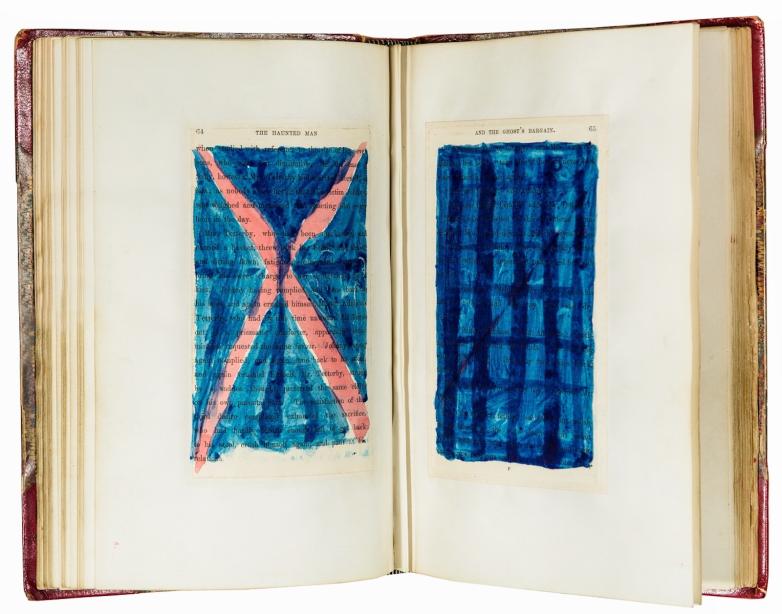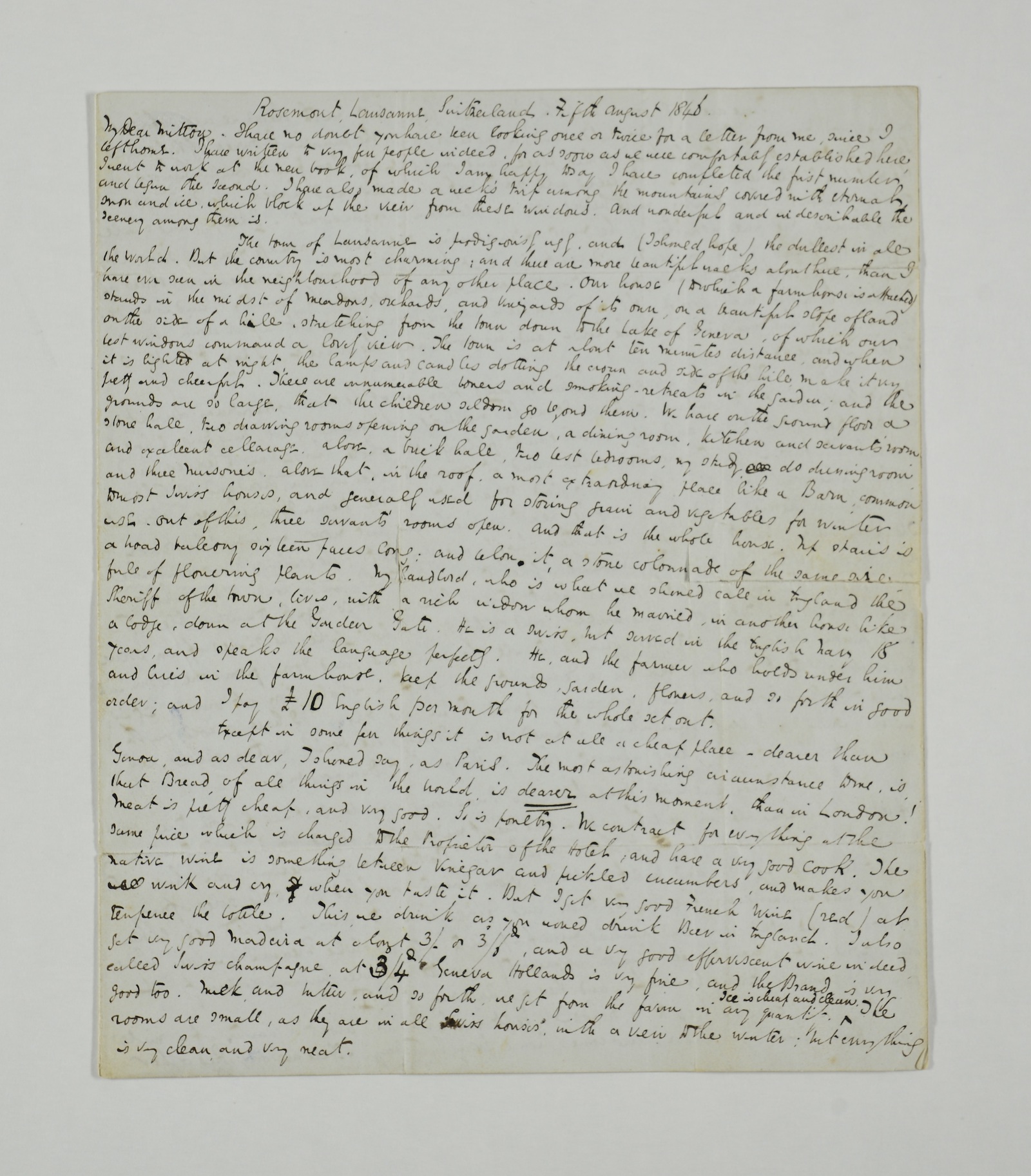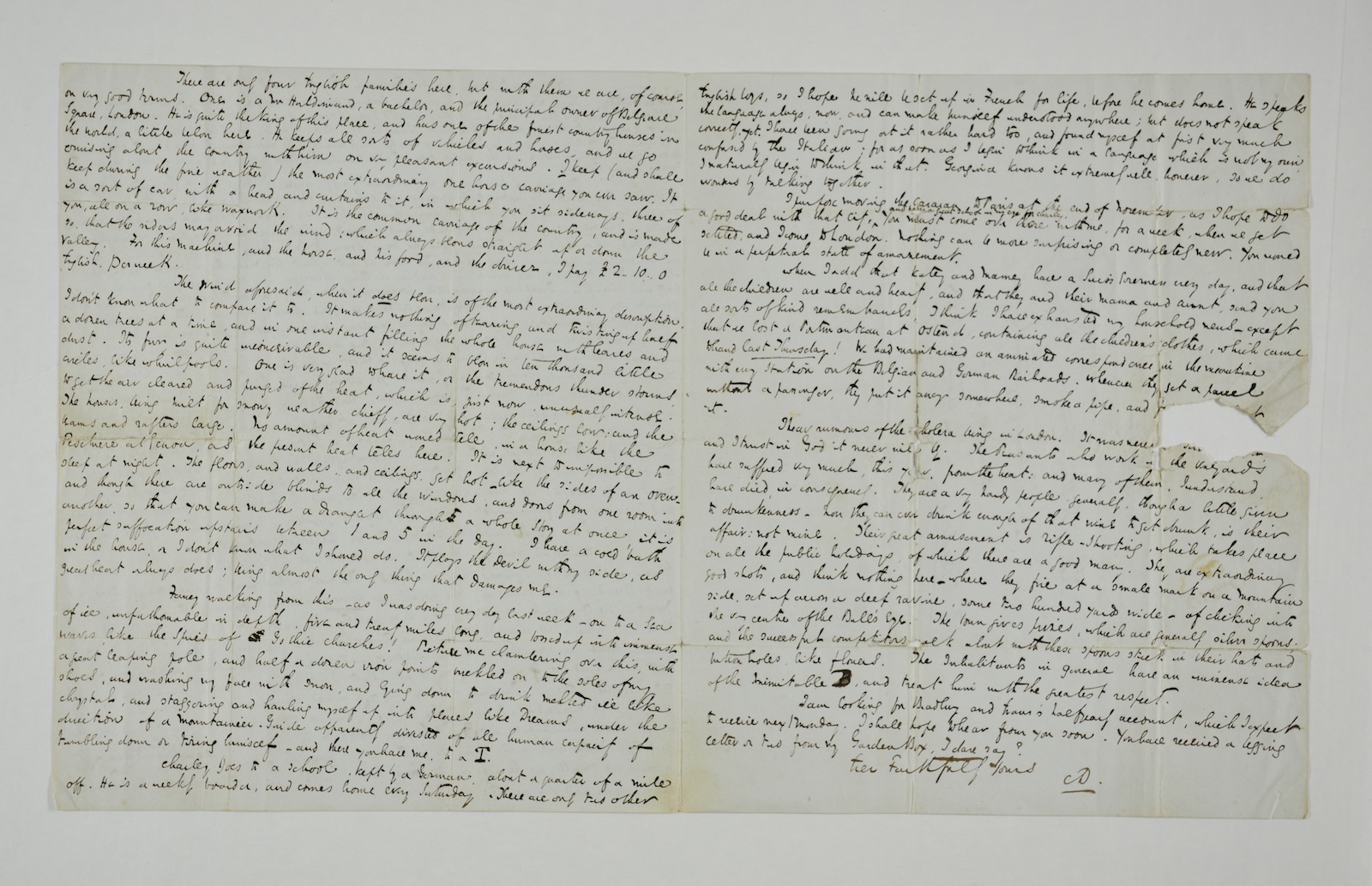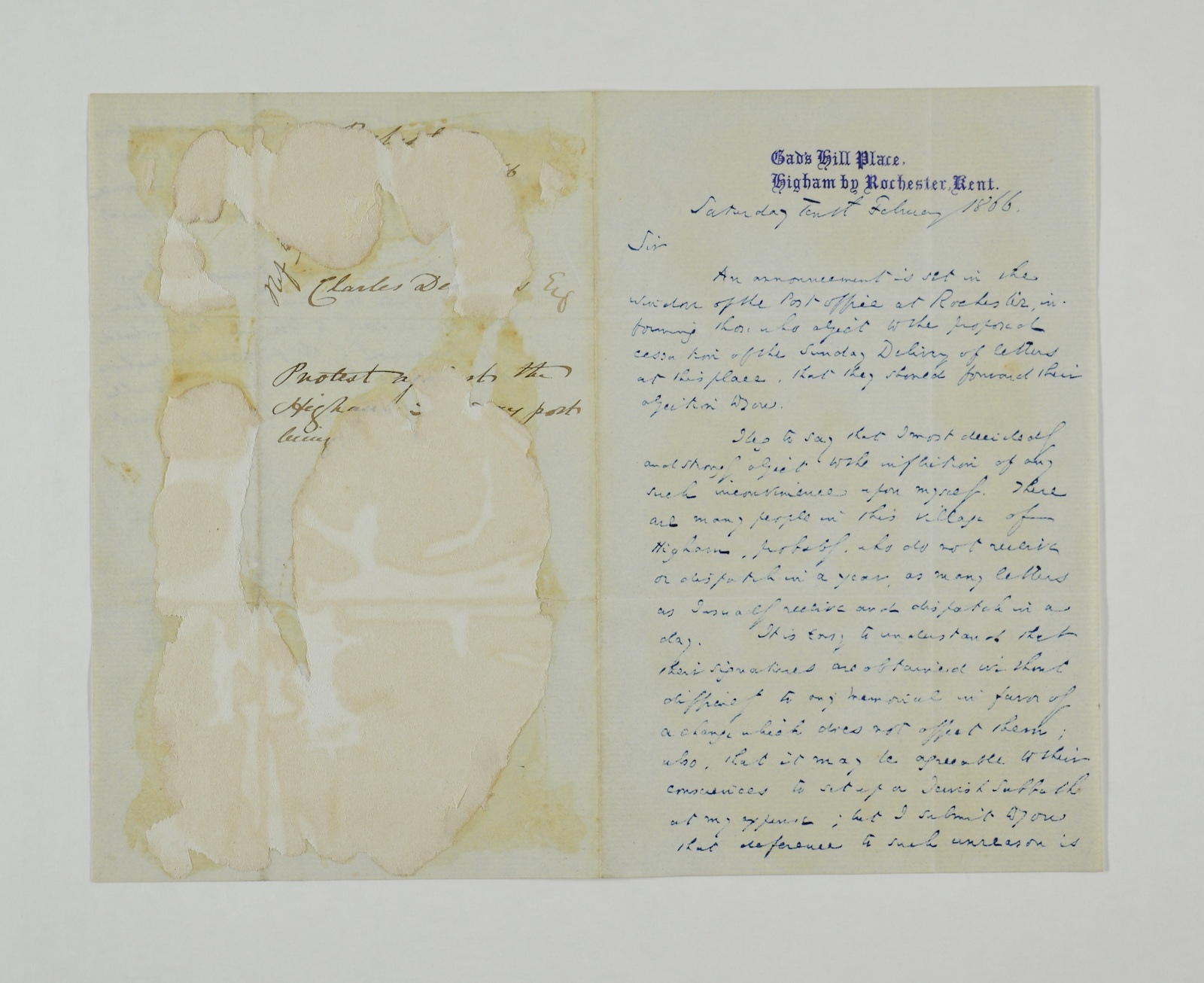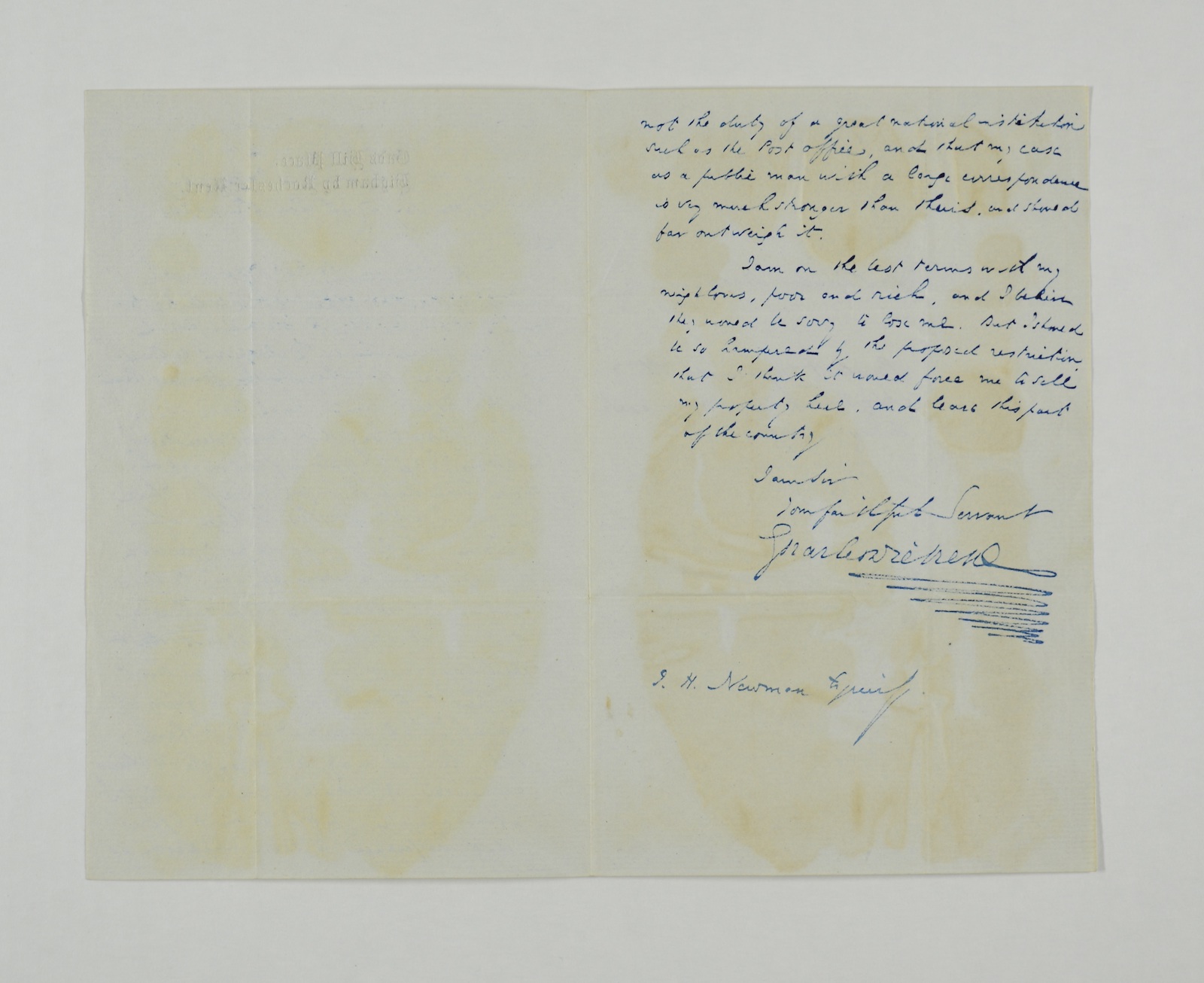The museum has also recently put on display 11 Dickens letters for the first time (and which can also be viewed online at www.dickensmuseum.com).
The collection includes assorted invitation notes, insights into Dickens’s reading habits, current writing projects and publishing matters. These include one written to I. H. Newman from Gad's Hill Place on 10 February 1866 in which Dickens complains strongly about a proposed change to the Sunday postal service. He even threatens to move if it is brought in. Also among the items is a rather dramatic dinner invitation to his friend John Harley which reads:
Say “no” and I never forgive you. Say “yes” and join us here at ten minutes past six next Thursday, and I shall always remain, Faithfully yours, CHARLES DICKENS
“One of the best things about this collection of letters is that it shows Dickens writing in his thirties, forties and fifties and the variety of topics that were occupying his mind,” said Emily Dunbar, Curator at the Charles Dickens Museum. “The letter complaining about the loss of Sunday postal delivery is a great example of Dickens showing self-importance, his awareness his great fame and position in society coming to the fore. He also mentions the huge volume of letters leaving and arriving at his address, of which this new set is a tiny but entertaining fraction.”

